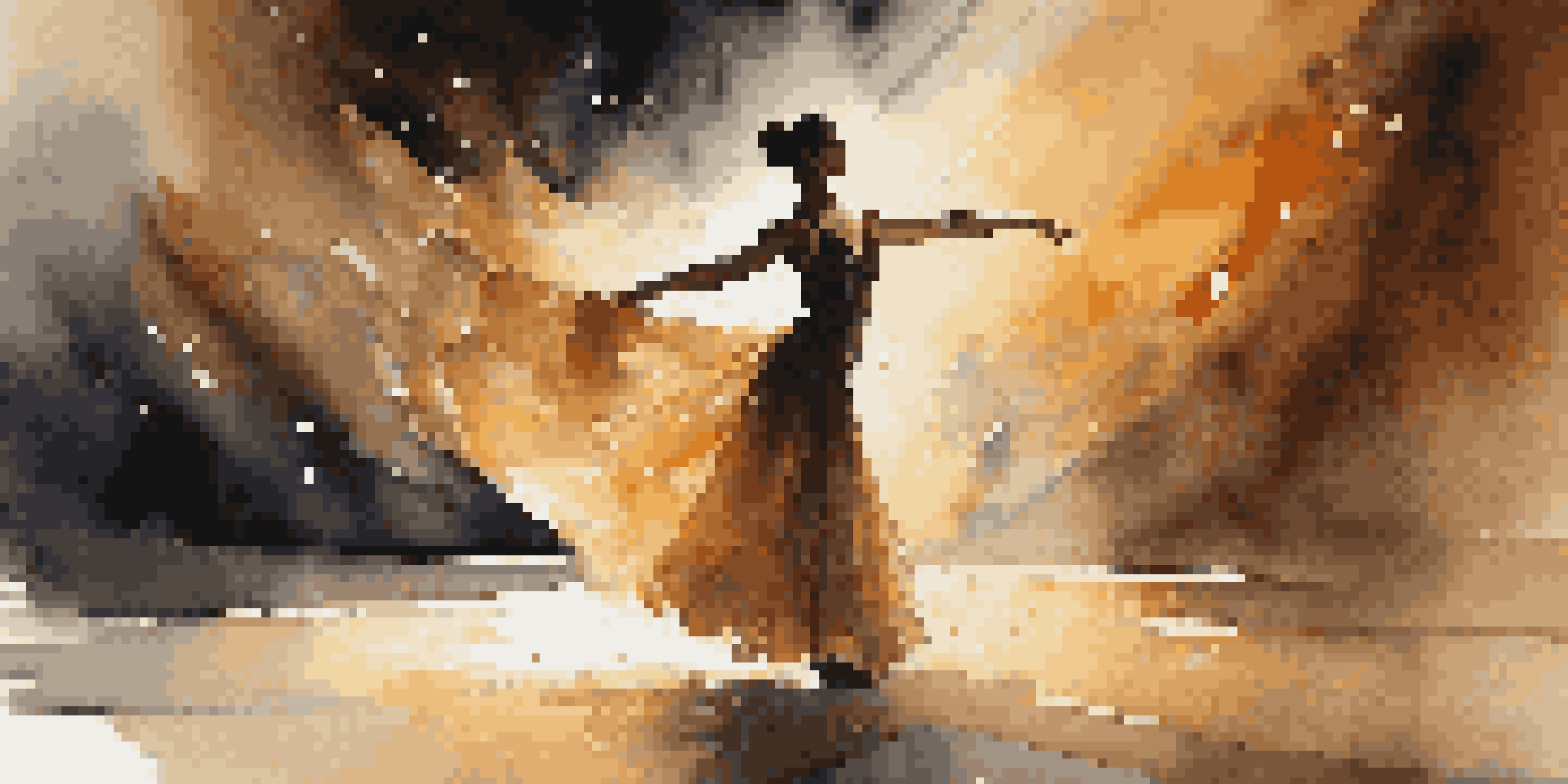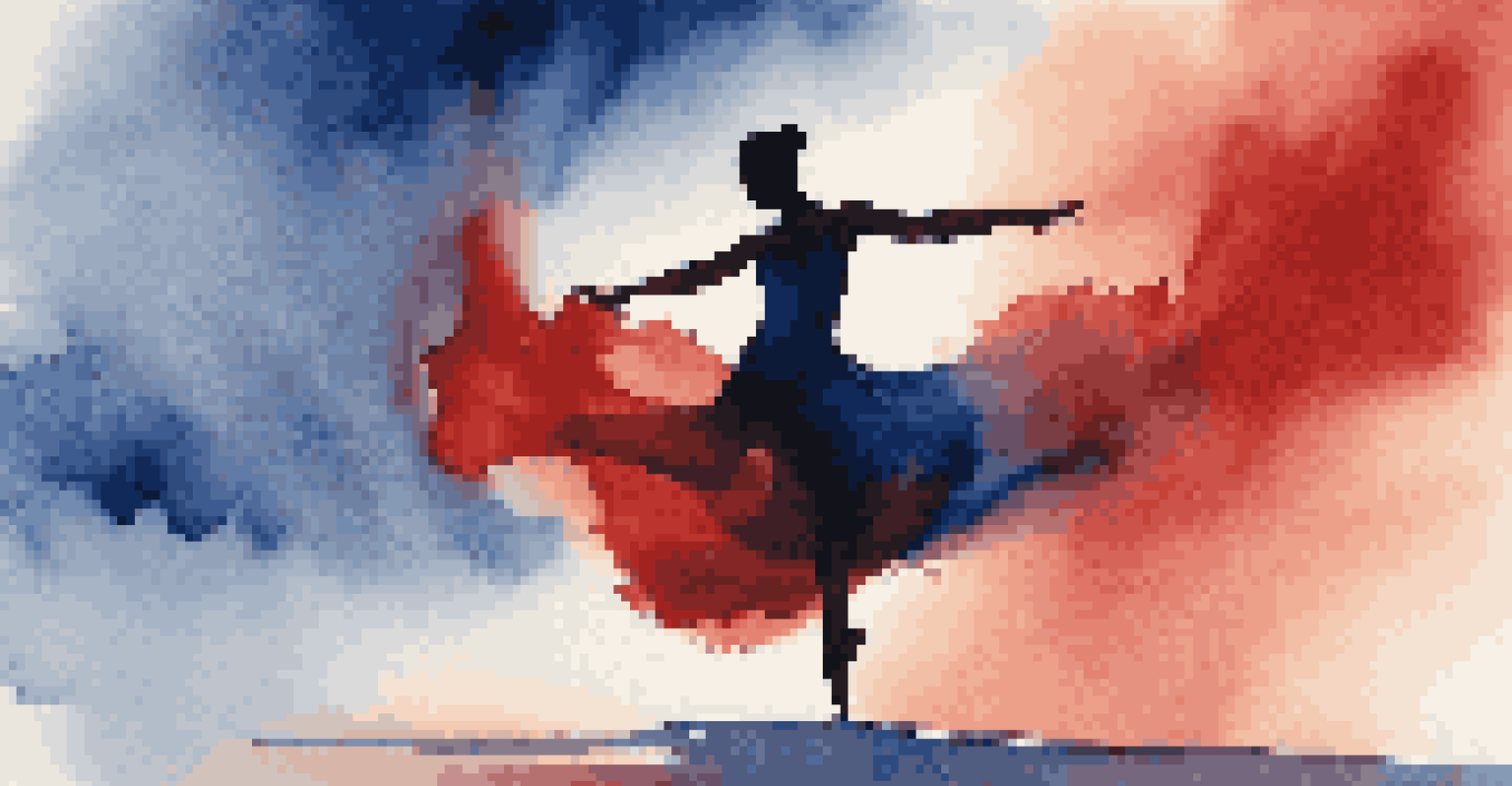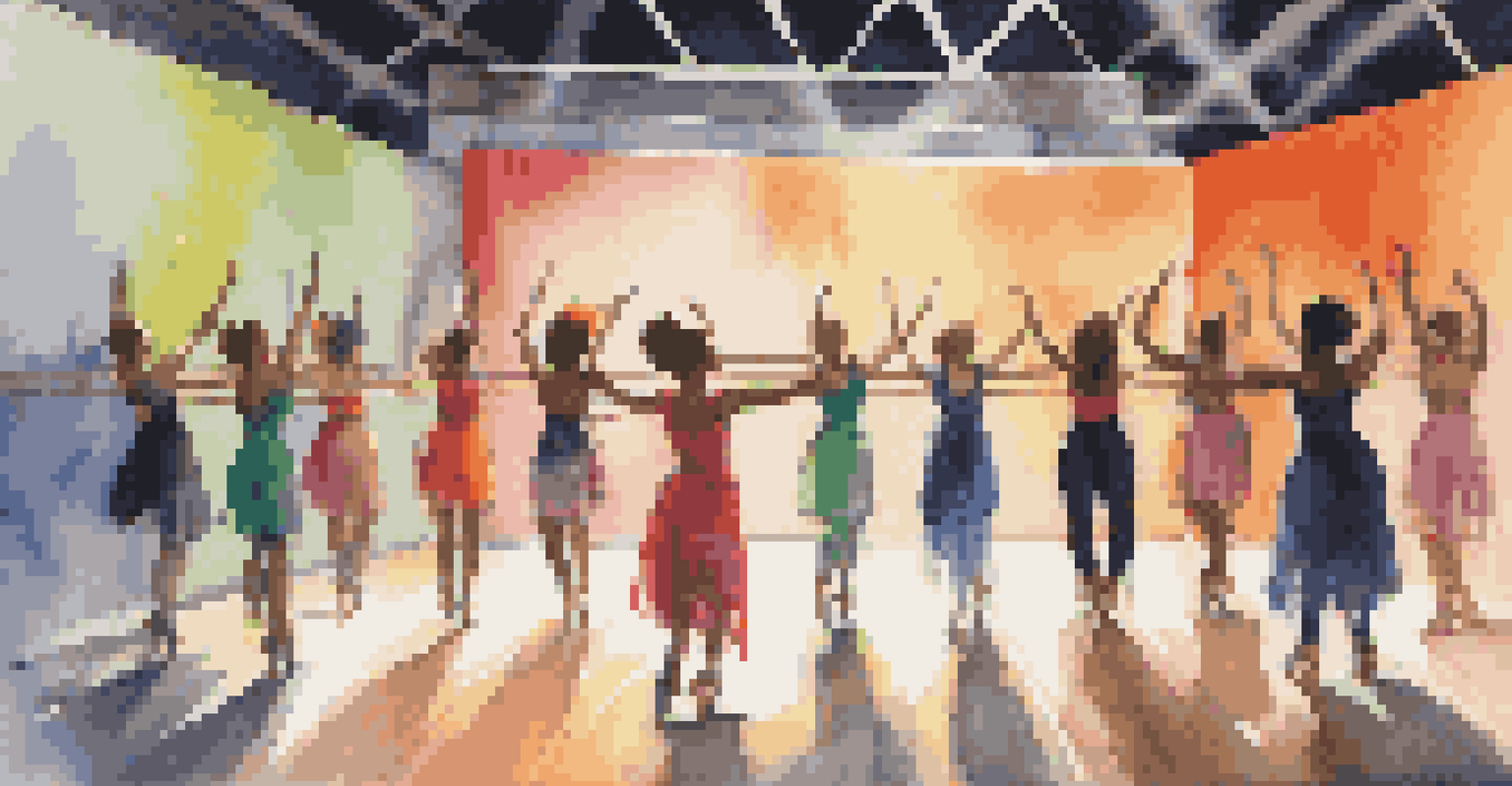The Role of Lighting in Enhancing Dance Costume Designs

Understanding the Basics of Dance Costumes and Lighting
Dance costumes are more than just clothes; they are an extension of the dancer's expression. When combined with the right lighting, these costumes can transform a performance into a mesmerizing visual experience. Just as a painter uses different brushes, choreographers and costume designers utilize lighting techniques to enhance the overall aesthetic of a dance performance.
Dance is the hidden language of the soul.
Lighting can highlight specific elements of a costume, drawing the audience's eye to intricate details that might otherwise go unnoticed. For instance, sequined fabrics can sparkle under certain lights, creating a dazzling effect that adds to the performance's energy. This interplay between costume and light is crucial in creating an engaging atmosphere for the audience.
Moreover, the emotional tone of a performance can shift dramatically based on the lighting used. A warm, soft light can evoke feelings of intimacy, while stark, bright lights may create a more dramatic or energetic feel. Understanding these nuances is essential for both dancers and designers to ensure a cohesive artistic vision.
The Psychological Impact of Lighting on Audience Perception
Lighting plays a crucial role in shaping how an audience perceives a performance. Different colors and intensities can evoke specific emotions, influencing the audience's connection to the dancers. For example, a deep blue light can create a sense of calm and serenity, while vibrant reds can generate excitement or tension.

Moreover, the timing of lighting changes throughout a performance can enhance dramatic moments or transitions. Imagine a dancer leaping into the air as the lights suddenly shift from a warm glow to a sharp white—this moment can elevate the excitement and draw gasps from the audience. The choreography and lighting must work in harmony to maximize this impact.
Costumes and Lighting Enhance Dance
Dance costumes serve as an extension of expression, and when combined with lighting, they create a captivating visual experience.
By using lighting strategically, designers can guide the audience's emotional journey, making the performance more immersive. This psychological engagement not only captivates the audience but also makes the dancers' movements more powerful and memorable.
How Color Choices in Lighting Affect Dance Costumes
Color is a powerful tool in both costume design and lighting. The hues chosen for both can complement or contrast, creating stunning visual effects that enhance the performance. For instance, a dancer dressed in vibrant red can be illuminated by softer tones to create a striking contrast, emphasizing their movements and expressions.
Lighting is like a paintbrush; it can create a mood or evoke an emotion.
Additionally, certain colors can change appearance under different lighting conditions. A costume that looks one way in daylight may take on a completely different hue under stage lights. This is why costume designers must consider the lighting environment when selecting colors, ensuring that the intended effect is achieved during the performance.
Furthermore, color psychology suggests that audiences may respond differently to various colors. By understanding these psychological effects, designers can craft a more impactful performance that resonates with viewers on a deeper level.
The Influence of Lighting on Movement Perception
Lighting can significantly affect how movement is perceived on stage. Certain lighting techniques can accentuate the fluidity of a dancer's movements, making them appear more graceful or powerful. For instance, backlighting can create silhouettes that emphasize the shape and form of the dancer's body, adding to the overall visual drama.
Conversely, poorly managed lighting can hinder the audience's ability to appreciate the nuances of movement. If the lighting is too harsh or inconsistent, it may distract from the performance rather than enhance it. This highlights the importance of collaboration between lighting designers and choreographers to ensure that every movement is showcased effectively.
Lighting Shapes Audience Emotion
The strategic use of lighting can evoke specific emotions in the audience, enhancing their connection to the performance.
Ultimately, the right lighting can elevate a dance performance, allowing the audience to experience the full spectrum of emotion and artistry. This synergy between movement and light is essential for creating a captivating and memorable experience.
Creating Atmosphere: The Role of Lighting in Dance
Atmosphere is vital in dance performances, and lighting is one of the most effective tools for creating it. The right lighting can transport the audience into a different world, setting the mood before the first movement begins. Whether it's a soft, romantic glow or harsh, dramatic shadows, lighting establishes the emotional landscape of the performance.
For instance, in a contemporary dance piece exploring themes of isolation, darker lighting can create a sense of unease, while warm, inviting lights may enhance a more joyful or celebratory performance. Each choice in lighting design contributes to the story being told through dance, making it a critical element of the overall production.
By carefully crafting the atmosphere through lighting, designers can deepen the audience's engagement with the performance. This immersive experience often leads to a more profound emotional response, making the dance memorable long after the curtain falls.
The Technical Aspects of Lighting Design for Dance
Lighting design for dance involves a blend of creativity and technical skill. Designers must understand various lighting equipment, such as spotlights, floodlights, and LED fixtures, to achieve the desired effects. Each type of light serves a different purpose and can drastically change the atmosphere and focus of a performance.
Additionally, understanding how to manipulate light intensity and direction is crucial. The angle of the light can create shadows that enhance movement, while the intensity can dictate the overall mood. Mastering these technical aspects allows designers to create a visually stunning experience that complements the choreography.
Collaboration Elevates Performances
The synergy between dancers, costume designers, and lighting artists is essential for creating a cohesive and engaging artistic vision.
Furthermore, rehearsal is essential to successful lighting design. By testing how the lighting interacts with the costumes and movements, designers can make adjustments to ensure everything aligns perfectly on performance night. This meticulous attention to detail is what separates a good performance from a truly great one.
Collaborative Efforts: Dancers, Designers, and Lighting Artists
The relationship between dancers, costume designers, and lighting artists is vital for a successful performance. Collaboration is key; each element must work in harmony to create a cohesive artistic vision. Dancers often bring their insights to the table, sharing how certain lighting or costume elements affect their movements.
In this collaborative environment, costume designers can develop pieces that not only look stunning but also enhance the dancer's performance. For example, a costume that allows for greater freedom of movement may require specific lighting techniques to fully showcase the dancer's skills.

Ultimately, this teamwork leads to a richer and more engaging experience for the audience. By sharing ideas and refining their concepts together, dancers and designers can elevate their performances to new heights, creating unforgettable moments on stage.